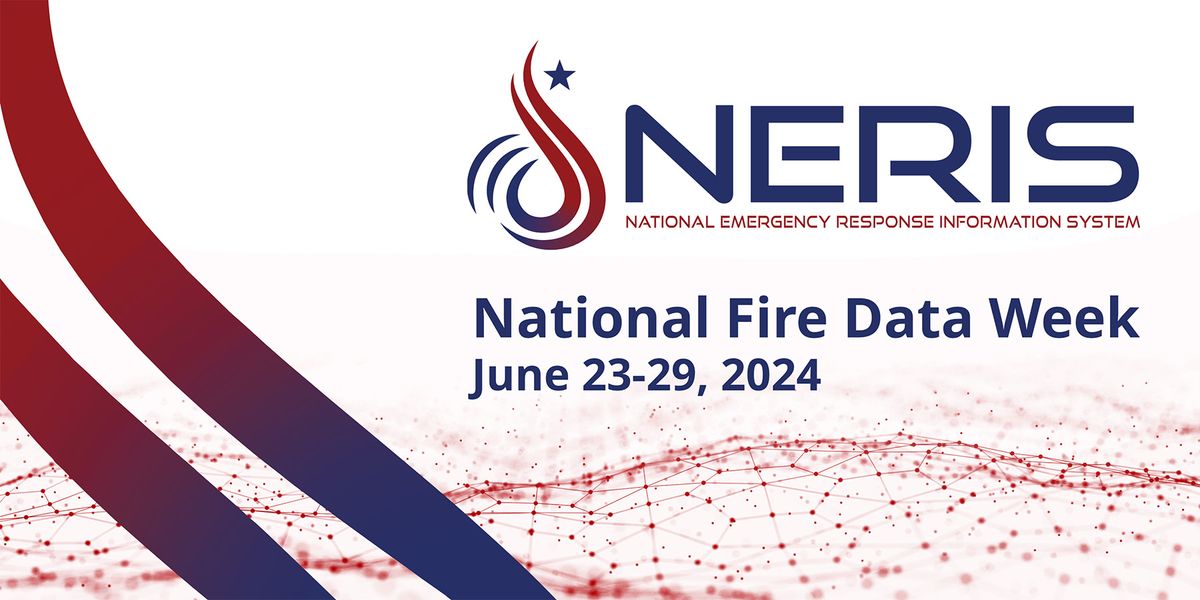
Tackling America’s Fire Problem
Embrace the full potential of data and pave the way for a more data-driven future. Get #NERISReady!
Posted: June 24, 2024
Our world is more data-driven than ever before. The transformative power of data redefines how we operate and enables new possibilities in how we prepare for, prevent, mitigate, and respond to all hazards. Organizations continue to recognize the potential locked within data and analytics as the means to extract meaningful insights and inform decision making. By embracing advanced data local fire and EMS departments can harness the full potential of data and pave the way for a more data-driven future.
USFA is committed to supporting the local fire and EMS community as we move into this data-centric era. In May 2023, on the 50th Anniversary of America Burning, USFA announced the launch of our effort to develop a new, interoperable fire information and analytics platform, known as the National Emergency Response Information System (NERIS), for the American fire and emergency services.
NERIS, slated for launch in late 2024, will empower our local fire and emergency services community by equipping them with an empirical basis for decision-making. It will provide the community with reliable predictive analytics to support enhanced preparedness and response to all-hazard incidents, wildland urban interface events, community risk reduction efforts and future pandemic emergency response resource preparedness.
In just the first 6 months of 2024, a total of over 1,060 home fire fatalities have been reported. What can we learn about the characteristics of fires today that can prevent future fires and casualties? We need better data on these incidents so that we can make data-informed decisions when investing in prevention and risk reduction. This is not a new challenge. The need to better comprehend the nation’s fire problem was established goes back to 1973 in the seminal publication of America Burning. The National Commission on Fire Prevention and Control recommended a “national fire data system be established to provide a continuing review and analysis of the entire fire problem.” More than 30 years later, we continue to face thousands of residential fire deaths annually, a rate essentially unchanged in over the past decade.
How does incident data and NERIS apply to CRR? Understanding the nation’s fire problem leads us directly to questions around community risk reduction (CRR). Community Risk Reduction is defined as strategic and integrated efforts focused on reducing the occurrence and impact of local risks within a community. For example, to inform our efforts in reducing risk, we need to examine many different data points against the following components of risk:
- Hazard Exposure and Likelihood — How likely is it that a fire will happen?
- Severity — What is extent of potential impact of a fire in that location? What is the likelihood that a fire will result in loss of life and property loss?
- Vulnerability — Who is most at-risk of injury or death in the fire?
- Prevention — What prevention strategies can potentially decrease the severity of a fire?
As we look forward to NERIS, answers to these and other questions in assessing risk will vary based on location — the common denominator — at multiple scales, to maximize the use of NERIS data and analysis in the risk assessment process.
The current version of NFPA 1300, Standard on Community Risk Assessment and Community Risk Reduction Plan Development, recommends that community risk assessments (CRAs) be conducted at least once every 5 years. With the legacy NFIRS system, fire departments have faced limitations in applying and integrating current and other data into the risk assessment process, and in increasing the frequency by which risk assessments are conducted. Near real-time data and analytic tools available through NERIS will remove constraints that have limited our analyses for community risk assessment and associated planned.
NERIS is being developed to improve how we approach CRR in the 21st century and into the future. Through NERIS, fire departments will have faster access to incident trends in their community, incorporating analysis on social vulnerability, past mitigation, and prevention efforts, etc. as the basis to understand the problem and the actions taken by the fire department in reducing risk. Additionally, NERIS will include an optional CRR module, allowing fire departments to track and measure the outcomes of their CRR programs. With NERIS, these types of CRR analyses will be available at varied levels of geography, such as fire station first due areas and census tracts, to inform more intelligent CRR strategies and investments at the most local level.
To solve today’s fire problem, whether that is single home fires or wildfires, a new approach to fire incident — and CRR — data and analysis must be taken. NERIS will take us to the next step of making incident data less about paperwork and more about problem solving. NERIS will introduce analytical capabilities for data-informed and defensible decision making to all fire departments, an economy of scale never seen in today’s fire service.
